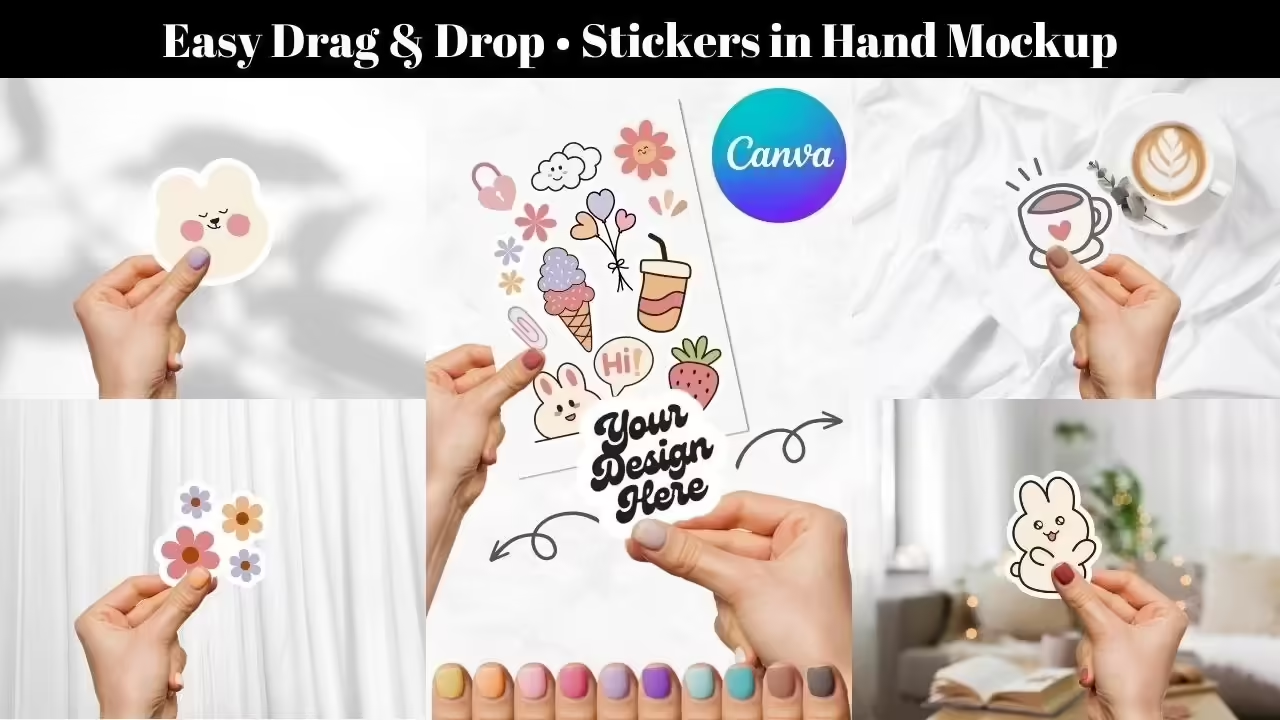
In today’s digital era, creating visually appealing content has become a fundamental need for individuals and businesses alike. The visual presentation of information plays a crucial role in capturing audience attention and effectively conveying messages. In this context, a revolutionary tool emerges: Canva.
What is Canva?
Canva is an online graphic design platform that has gained popularity for its intuitive and accessible approach to creating images, presentations, graphics, and other visual elements. Founded in 2012 by Melanie Perkins, Cliff Obrecht, and Cameron Adams, Canva has democratized design by making it accessible to individuals without technical expertise in graphic design.
Primary Purpose of Canva
The primary purpose of Canva is to simplify the design process and make it possible for anyone, regardless of their technical skills, to create stunning visual materials. From crafting social media posts to professional presentations and advertising brochures, Canva offers a wide range of templates and tools that facilitate customization and the creation of high-quality visual content.
Key Features of Canva
Intuitive Interface: Canva’s user interface is easy to navigate, even for those without graphic design experience. The tools are logically organized, allowing users to find what they need without complications.
Professional Templates: Canva provides a wide variety of pre-designed templates for different types of projects. Whether you need to design an Instagram post, a book cover, or a business presentation, Canva has a template that suits your needs.
Resource Library: Canva offers access to an extensive library of graphic elements, such as images, icons, fonts, and backgrounds. This allows users to customize their designs and add high-quality visual elements without searching through multiple sources.
Real-Time Collaboration: Canva allows users to collaborate on projects in real-time, facilitating teamwork. Changes are updated instantly, enhancing efficiency and communication among team members.
Multiplatform Compatibility: Canva is accessible from any device with an internet connection, whether it’s a desktop computer, tablet, or smartphone. This provides users with the flexibility to work on their designs from anywhere.
User-Friendly Interface: Stress-Free Designing on Canva
In the vast landscape of online graphic design, the user interface becomes a determining factor for the user experience. Canva stands out not only for its robust functionality but also for a user-friendly interface that transforms the design process into a stress-free task, even for those with no prior experience in graphic design.
Intuitive Design:
From the moment you log in to Canva, simplicity and clarity are evident. The interface has been designed with a focus on ease of use, allowing users to quickly immerse themselves in the creative process without feeling overwhelmed by complex options.
Logical Tool Organization:
Design tools in Canva are organized logically and sequentially. The sidebar presents clearly defined categories such as “Elements,” “Text,” and “Images,” making it easy for users to search and select elements for their designs. The logic behind this organization reduces the learning curve, enabling users to find what they need efficiently.
Pre-designed Templates:
One of the standout features is the extensive library of pre-designed templates. These templates cover a wide range of categories, from social media to business presentations. Beginner users can choose a template that suits their needs and easily customize it according to their preferences.
Drag-and-Drop Tools:
The drag-and-drop feature is a fundamental pillar in Canva. Elements can be added to the canvas by simply dragging them from the library and dropping them in the desired position. This intuitive functionality eliminates the need to understand complicated commands and allows users to create designs seamlessly.
Real-Time Editing:
The ability to make real-time edits is another significant advantage. Changes made to the design are reflected instantly, providing users with an immediate visual experience and eliminating uncertainty about how the final product will look.
Step-by-Step Guide:
Canva provides a step-by-step guide for new users, highlighting essential functions and offering helpful tips. This further facilitates navigation and understanding of the available tools, encouraging user confidence and autonomy.
Multiplatform Compatibility:
Accessibility is key in Canva. The platform is available on multiple devices, from desktop computers to mobile devices. This allows users to design anywhere and anytime, providing flexibility to accommodate their busy schedules.
Creative Templates: Inspiration at Your Fingertips on Canva
In the world of graphic design, inspiration is the spark that ignites creativity. Canva, the online design platform, has taken this premise to the next level by offering its users a wide and diverse range of creative templates. These templates not only serve as a starting point but also act as endless sources of inspiration, enabling anyone, regardless of their design experience, to create stunning designs with ease.
Unlimited Variety:
Canva’s template library is truly impressive in its diversity. From elegant and minimalist designs to colorful and vibrant options, Canva offers templates that cover virtually every imaginable category. Whatever project you have in mind, you are likely to find a template that perfectly suits your needs.
Adaptability to Different Projects:
The versatility of Canva’s templates is key to its success. You can find specific options for social media, presentations, business cards, posters, invitations, and much more. This adaptability ensures that users can find the perfect template for the specific purpose they have in mind.
Professional Designs Accessible to All:
The quality of Canva’s templates is exceptional, regardless of the category. Users can access professional designs created by experts in the field, allowing even those without design experience to achieve visually stunning results.
Effortless Customization:
The magic of Canva’s templates lies in their ability to be easily customized. Once the base template is selected, users can modify colors, fonts, images, and other elements to tailor the design to their individual preferences. Canva’s intuitive interface allows this customization without the stress associated with creating from scratch.
Creative Stimulus:
Templates are not only practical tools but also endless sources of inspiration. Even for those who may experience creative blocks, exploring the wide variety of templates on Canva can trigger new ideas and approaches. Each template serves as a starting point that invites users to experiment and explore creative possibilities.
Time and Effort Savings:
Using templates on Canva means saving time and effort. Instead of starting from scratch, users can leverage the established structure of templates, allowing them to focus on customization and the effective communication of their message without the burden of initial creation.
Editing Tools: Customize Every Detail on Canva
Canva not only stands out for its user-friendly interface and creative templates but also for its powerful editing tools that allow users to customize every detail of their designs. From adjustments to images to text manipulation and graphic elements, Canva offers a robust set of editing options that make the creation of personalized designs a smooth and rewarding experience.
Image Adjustment:
Filters and Effects: Canva provides a variety of filters and effects that allow users to modify the tone, saturation, sharpness, and other aspects of their images. These filters not only add style but can also unify the visual aesthetic of a design.
Cropping and Scaling: Cropping and scaling tools are essential for fitting images into the design. Canva facilitates precise cropping and resizing of images, ensuring they fit perfectly into the available space.
Creative Text:
Varied Typography: Canva offers a wide variety of typefaces for users to choose from. From elegant serifs to modern sans-serifs, users can find the font that best suits the tone of their design.
Alignment and Spacing: Alignment and spacing tools ensure that text is placed precisely and visually balanced. This is crucial for a clean and professional presentation.
Graphic Elements:
Layers and Order: Canva allows the organization of elements in layers, making it easy to overlay graphic elements. This feature is essential for designing complex compositions without losing visual clarity.
Custom Colors: The custom color selection tool gives users the freedom to adjust the colors of graphic elements to match the desired palette.
Design Optimization:
Preview Mode: Before finalizing the design, the preview feature in Canva allows users to see how the design will look in its final format. This is useful for making fine adjustments and ensuring that all elements harmonize.
Consistency in Design: Maintaining visual consistency is crucial for effective design. Canva offers tools to copy styles and apply similar formats to various elements, ensuring a cohesive appearance.
Tips for Design Optimization:
Less is More: Avoid visual overload. Focus on key elements and strategically use white space to achieve a clean and attractive design.
Trial and Error: Don’t hesitate to experiment with different combinations of colors, fonts, and layouts. Canva makes it easy to make changes and adjustments to find the perfect combination.
Effective Contrast: Ensure there is clear contrast between elements such as text and images to enhance readability and visual understanding.
Brand Consistency: If designing for a brand, consistently use brand colors and elements to strengthen visual identity.
Real-Time Collaboration: Streamlined Teamwork with Canva
In a connected and teamwork-oriented world, Canva stands out not only for its design capabilities but also for its robust real-time collaboration feature. This feature not only simplifies the teamwork process but also enhances efficiency and creativity by allowing multiple users to contribute and edit simultaneously in a shared project.
Highlighted Collaboration Features in Canva:
Simultaneous Editing: With Canva, multiple team members can edit a design simultaneously, eliminating the need to wait for one user to finish before another can start. This streamlines the creative process and encourages seamless collaboration.
Inline Comments: The inline comments feature allows users to leave specific comments on design elements. This facilitates communication among team members and provides a space to discuss changes, improvements, and suggestions directly within the context of the design.
Sharing and Collaborating via Links: Canva allows users to share a real-time access link to the design. This is especially useful for obtaining feedback from individuals outside the main design team, such as clients or external collaborators.
Version Tracking: Canva tracks versions of the design, making it easy to revert to an earlier version if necessary. This is essential for maintaining the integrity of the design in intensive collaboration environments.
Access Control: Canva design owners can control who has access and editing permissions. This ensures security and prevents unwanted changes to the design.
Practical Examples of Collaboration in Canva:
Team Presentations: Imagine a team working on an important presentation. Several members can collaborate simultaneously on different slides, add graphics, edit text, and leave comments to ensure the presentation is cohesive and effective.
Social Media Content Design: A marketing team can collaborate on creating social media content in Canva. While one member adjusts the copy, another can work on graphics, and another on selecting images, allowing for quick and coordinated production.
Logo Design: When designing a logo for a company, multiple designers can contribute ideas and adjustments to the design in real-time. Comments and changes can be discussed and applied immediately, streamlining the creative process.
Collaborative Infographic Creation: For creating an infographic, different team members can focus on specific sections, ensuring that the information is accurate and visually coherent.







